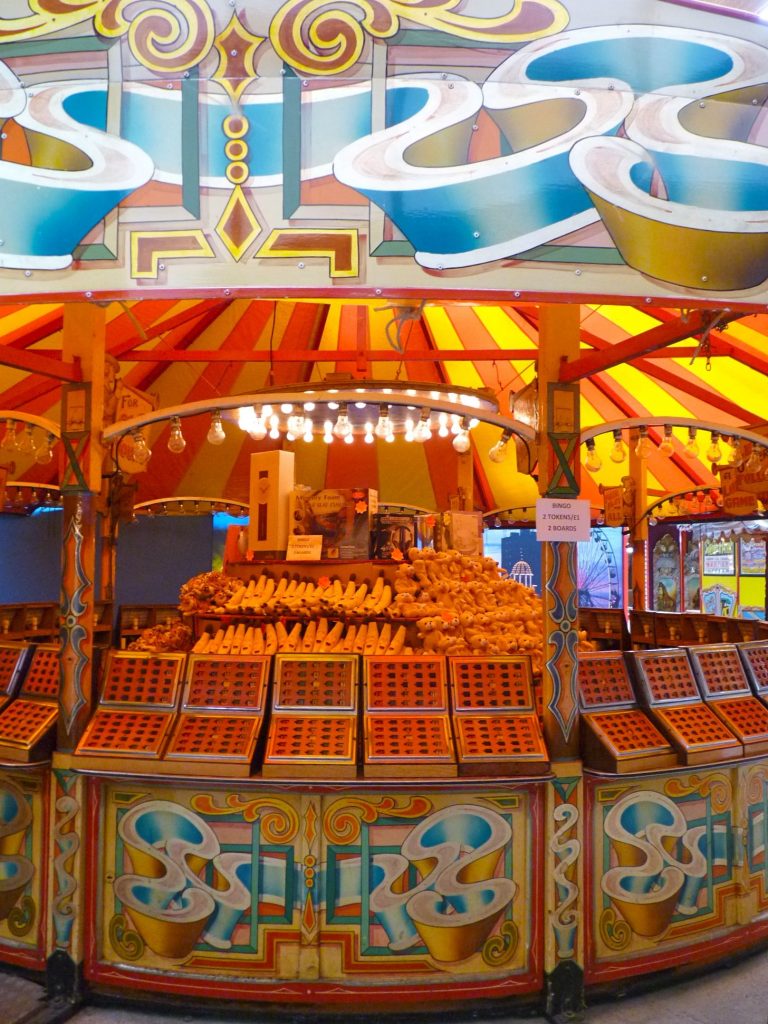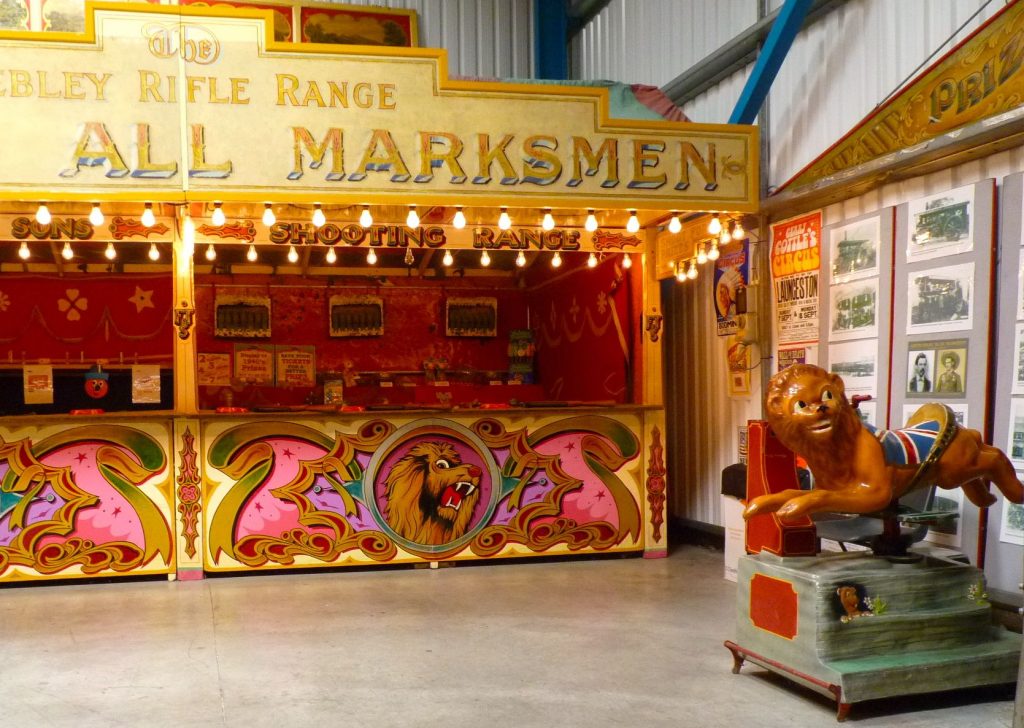
A dozen times a year I drive down the A303 to Cornwall. Just before Launceston, when I am thinking of stopping for a cup of tea, I flash past a brown tourist sign that reads ‘Dingles Fairground Attractions’ but I had never turned off. Then one day I wandered into Malcolm Glickstein’s junk shop in the diaspora around St Pancras Station. Minutes later, I was handing over the first down payment on a battered double-seater Victorian ‘galloper,’ My merry-go-round horse was made in Burton on Trent by the chief carver of the firm of Orton and Spooner, the veritable C.J. Spooner, and had been painted and repainted dozens of times during its working life. Michael specialised in these wonderful things, and it was from him that I first heard of Dingles Fairgound Heritage Centre (as it is now more tastefully called).

Next time I headed west, I turned off for Dingles and drove down a mile of minor country roads to find it, a cluster of former agricultural buildings and one modern industrial hangar . My first visit was on a bleak wintry day and I had the place entirely to myself. Nothing had prepared me for the bliss that followed. Were you ever taken to the fair for a special treat? Did you long to win a goldfish, were you allowed candyfloss, did you prefer the dodgems or the octopus, were you too scared for the ghost train and did you end up feeling terribly sick? I was always lucky with goldfish but rides on the merry-go-round were my personal ecstasy.

At Dingles there are two collections, this one of older fairground attractions in the museum shed and a much larger hangar full of working fairground rides. My first pictures are taken in the museum, where the spinning crocodile-fish will tell your fortune. The noble horses under tarpaulins are from a huge merry go round known as Edwards Golden Gallopers built by Savages of Kings Lynn, a firm that was world famous for their galloping horse roundabouts. No less an artist than Barbara Jones made a point of drawing their workshop for the Second World War propaganda commission, ‘Recording Britain,’ and you will find an honourable mention of her endeavours here.

The racing car drivers were painted by Edwin Hall for the fascia boards of a dodgem ride commissioned by Sam Crow in 1938. The ride passed from father to son and was traveled around the north-east of England until the 1970s.
The first fairground ride-upon that I coveted was a life-sized goat that hung for almost two years against the window in Malcolm Glickstein’s junk shop. Although I had left no deposit on it, I thought of it as already mine, until suddenly one day it was gone. The next time that I saw it was in Primrose Hill. It had joined the collection of that interesting artist Peter Blake and was on show with other toys, taxidermy and gee-gaws in the show that he had curated, the Museum of Eveything’s exhibition no. 3.

This children’s roundabout dates from before the First World War. It was built in Sowerby Bridge In Yorkshire, and traveled by Arthur Swift who probably built the space rocket and the liner (named Queen Elizabeth) himself. Arthur and his ride retired in the 1970s.

The blissful thing about these dodgems built by Orton Sons and Spooner, is that they are still running. For a modest fee you can go on all the rides in the big hangar. Each one plays a different hurdy-gurdy tune and the sweet throbbing cacophony of organ and wurlitzer when you arrive inside makes the hairs stand up beautifully on the back of your neck.

On my second visit a party of nostalgia-and-fun loving senior citizens were thrilling to the Super Chariot Racer, a white knuckle ride built over seventy years ago.

Dingles is almost entirely run by a knowledgeable band of volunteers, enthusiasts and trustees. The President of the Showmans Guild of Great Britain describes it as ‘ our life and our heritage,’ for the rides here were used and operated by ‘our fathers, grandfathers and great grandfathers.’ Together they spent years fundraising at rallies to buy, rebuild and restore everything here and to set up the educational trust that runs Dingles now.

A story printed in yesterdays Financial Times’ How to Spend It magazine describes fairground art as folk art that is now highly collectable. Baby bankers, hedge funders and their dealers are scrabbling to buy up the jolliest pieces to install in their drawing rooms as talking pieces; battered condition and flaky paintwork is ‘not a problem.’ Visit’ Dingles Fairground Attractions ! and give thanks for all those un-monied, non-mercenary enthusiasts who built and run this wonderful place. All images copyright bibleofbritishtaste.
Thanks to everyone at Dingles and especially Roger Alford. Dingles is off the A30 in Devon, 35 miles west of Exeter, open 7 days a week, February to November. https://fairground-heritage.org.uk/
Excerpts and links may be used, provided that full and clear credit is given to bibleofbritishtaste, with appropriate and specific direction to the original content.













Wonderful place and photographs: on the merry-go-round, I would definitely go for the surreal chicken with the green-giraffe neck…
The chicken is my favorite also but I’d love to see “your” goat too! What nostalgia. When I was little we used to go to Fountain Ferry where all the rides were vintage. No telling how long they had been there. The Merry-Go-Round was always my favorite with the up and down motion of the carved animals and the lovely music coming from the organ. Sigh……..
Great post!
What memories of childhood this brings back! I’ve put it on my list of places to visit.
Absolutely Brilliant, can’t wait to go there. I only learned to drive last year finding myself on Dartmoor after eviction from London so I’m always looking for the buzz and culture I miss, Thanks!
My wife and I loved the day we spent here. It was the highlight of our trip to England, just so unexpected and such a great find.